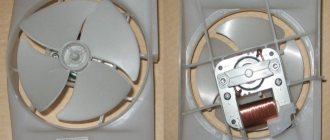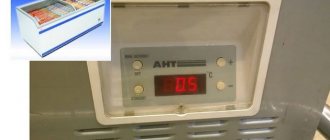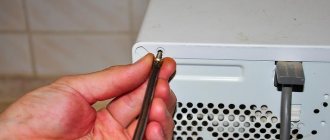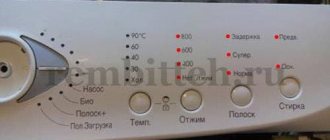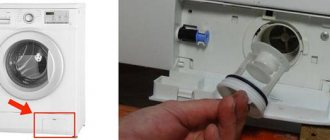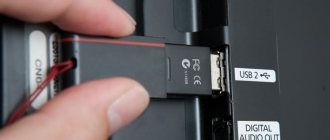Automatic coffee machines are very convenient to use: the drink is prepared in a matter of minutes, and you only need to put in a minimum of effort. Therefore, it becomes especially disappointing when a useful assistant in the kitchen breaks down. Repairing a coffee machine in service centers is a long and expensive undertaking. But sometimes the problem can be solved on your own, without resorting to the help of specialists. Let's look at the most common coffee machine malfunctions and how to fix them at home.
Why does a coffee machine break down?
Proper operation and care of the coffee machine ensures long-term service and stable operation. Unfortunately, in an office environment, coffee machines often work continuously, almost to the point of wear and tear, and it is not always possible to take good care of and thoroughly clean all the elements of its design: there is simply not enough time. However, regular maintenance, cleaning and general checks on the functionality of the coffee machine will significantly reduce the risk of breakdown. Here are the points you should pay attention to in advance.
- Low quality water is used to make coffee. If you use ordinary tap water, unfiltered, saturated with chlorine and other harmful impurities, sooner or later this will lead to the formation of scale and limescale on the internal parts of the coffee machine.
- Power outages. Periodic power failures and frequent switching on/off of the device also contribute to breakdowns.
- Wear of parts during long-term use. If the coffee machine has been serving you faithfully for more than a year, natural wear and tear of the structure may occur. Here it is better to consult a specialist: perhaps some parts still need to be replaced.
- Careless operation of the device, lack of regular cleaning. Cleaning your coffee machine is one of the most important maintenance components. Often, special cleaning products, descaling tablets, etc. are included with the device, but in certain cases, thorough manual cleaning is also necessary.
- Ingress of foreign objects into the structure, clogged filters.
These are just general reasons why your favorite coffee machine may suddenly break down. Next, we will highlight typical types of breakdowns that can occur with coffee appliances of various types and functionality.
Content in different drinks
Caffeine is one of the most commonly used natural stimulants in the world. The proportion of theine depends on the ingredients and method of preparation. The largest amount of alkaloid is found in espresso.
Coffee
The proportion of caffeine in coffee can reach up to 2.7%.
There are several variables to consider here:
- The climatic conditions in which the trees grow and their type: Arabica, Robusta, etc.
- Roasting intensity. It also affects its concentration, but to a lesser extent, shaping the taste and aroma more.
The presence of caffeine in the drink depends on the type and roasting of the beans.
Tea
Tea leaves have twice the caffeine content of coffee beans, but the amount of leaves used to make a cup of tea is minimal.
In addition, its effect is weakened by the presence of other nutrients such as essential oils, enzymes and phenolic compounds. As a result, a mug of tea contains less caffeine than the same serving of coffee.
Tea also contains caffeine, but in smaller amounts.
comparison table
Average caffeine content in different types of drinks and coffees:
| Drink | Caffeine mg/100g |
| Espresso | 200 |
| Coffee made using a coffee maker | 115 |
| Americano | 120 |
| Instant coffee | 65 |
| Decaffeinated coffee | 3 |
| Carbonated drinks (in Coca-Cola, Fante, etc.) | 20-40 |
| Tea | 10-60 |
| Hot chocolate | 10 |
Why doesn't the coffee machine turn on?
If your coffee maker won't turn on, it could be due to many problems. Among them, the most common ones are most often identified.
- Electrical cable is bent or broken. To eliminate the defect, it must be replaced.
- When there are sudden power surges in the network, the fuse trips and the coffee machine stops turning on. In order for it to work again, this part must be replaced. It is recommended to use a stabilizer that will prevent damage to household appliances.
- If the coffee maker is running continuously, it may overheat. In this case, the thermal protection will work and turn off the device. In this situation, you just need to let the coffee machine cool down.
- With prolonged use, scale forms in the coffee maker and coffee deposits appear. All this can lead to open contacts. To start brewing coffee again, you need to thoroughly clean the device and restore the contacts.
- Control module failure. This defect is the most serious, and to correct it you will have to seek the help of professionals.
However, the problem is not necessarily with the coffee maker. First you need to check the following.
- Make sure there is electricity in the apartment. It is quite possible that the plugs in the electrical panel were knocked out.
- The machine may turn off due to clogged filters. They need to be cleaned or replaced. After this, the device will operate normally.
The pressure gauge in the coffee machine stopped working
A pressure gauge is an element of a system that controls pressure. If it does not function, it is enough to clean the tube that connects it to the coffee machine unit. If necessary, replace it with a new one.
This is a small part of typical coffee machine malfunctions. If you want to know more, contact the specialists!
The coffee machine does not respond to button presses
In such a situation, you should immediately check whether there is water in the tank and coffee in the container. In addition, you need to make sure that the knobs and buttons are in the correct position. Sometimes a protection may be triggered that will not turn off until everything returns to its original position. If this does not work, it is recommended that you carefully study the instructions. It can help determine the cause of the breakdown. Most often, it can be indicated on the device display.
Sometimes, to eliminate a defect, you will need to remove the control panel and check the contacts with a tester. Perhaps the cause of the malfunction is that the buttons are dirty, causing them to stick and not work. In this case, you must thoroughly clean the control panel contacts and buttons.
If this does not help, then most likely the cause of the malfunction is an electronic failure. In this case, you should not try to repair the coffee maker yourself. You must immediately take it to a service center.
How to repair a Saeco coffee machine yourself
By the way, it is possible to repair a Saeko coffee machine with your own hands at home, taking into account such features of the equipment as the ability to completely disassemble it, providing full access to the components.
Do-it-yourself repair of a Saeco coffee machine may be absolutely necessary if you service it carelessly or incorrectly, use coffee beans of poor quality and unacceptable varieties, or configure the settings incorrectly.
Because Saeko is a delicate unit, repair of a Saeko coffee machine should in most cases be entrusted to professionals. However, repairing a Saeko coffee machine with your own hands is available if necessary:
- eliminate plaque on the walls;
- clean the cappuccino maker;
- restore the backlight on the switch;
- eliminate noise and vibration during operation.
Cozy coffee
In order to eliminate plaque and scale on the walls in Saeko, you should watch the corresponding video, and then use branded liquids and tablets. At the same time, you can clean the Saeco cappuccino maker using the same products, not forgetting to rinse the system afterwards for safety.
You can talk about self-solvable problems with a Saeco coffee machine if:
- water does not flow out of the device;
- coffee is heated only to room temperature;
- The mechanical component of the unit does not work.
Coffee machine Saeco lirika
Water flows out from under the car horn
Many owners of carob coffee machines are faced with such an unpleasant phenomenon as water leakage in the area where the carob is attached to the machine body. You can fix this damage yourself with a little effort. First, consider the O-ring that is located at the joint between the “spout” and the main body. Check the integrity of the O-ring. Most likely, it is clogged: there may be fat deposits, coffee waste, as well as foreign solid objects. If there is no blockage, but the ring is torn or there are cracks on its surface, it is necessary to replace this part with a new one.
Please note that the new O-ring must be identical to the old one, have the same characteristics and dimensions, otherwise it can cause damage and overheating.
Water leakage can also occur due to a clogged horn filter. Sometimes cake and coffee waste accumulate on it in a thick layer. Clean the filter in a timely manner and carefully replace it after cleaning.
By the way, similar malfunctions often occur with Delonghi coffee machines: during the process of making coffee or after finishing work, water appears under the unit. The manufacturer DeLonghi warns that you must read the instruction manual and also calls for careful care and regular cleaning of parts.
The coffee machine is leaking or leaking
Water is leaking from under the coffee horn, accumulating under the coffee machine, the O-rings should be checked. Often, ground coffee, grease and dirt get underneath them. The seal is broken and steam escapes
For DeLonghi models, the instructions draw the attention of buyers to careful handling of coffee machines. They have water accumulating in the pan and under the car itself.
Open the housing, remove the coffee brewing unit and check the O-ring. Remove it, wash it, clean the entire unit and reinstall it. If cracks form on the ring, you need to buy a new one. To do this, you should take your passport to a specialized store. Rings from equipment from other companies will not fit. They will be rougher or softer, of different sizes.
The horn filter should be washed. If it is clogged, steam coming under high pressure finds its way out in a weak spot. By analogy, the brewing unit in a coffee machine is checked and all tubes are cleaned.
Leaks must be repaired in a timely manner. There is a lot of electrical equipment inside the car. If water gets on it, a short circuit to the housing and electric shock may occur. At best, the motor or board will burn out.
The coffee machine is very noisy
If, while making coffee, you notice that the coffee machine makes strange noises: crackling, hissing or whistling, then most likely the filter or mesh in the coffee horn is clogged. What to do in this case? Carefully disassemble the structure and clean clogged areas. The most convenient way to do this is with the help of special cleaning products for coffee machines and coffee makers.
To remove deposits from the mesh, use a regular toothpick or small brush, just be careful not to tear or scratch the thin material.
Perhaps you are using coffee that is too coarsely ground, and the pores of the filter simply cannot handle the particles, and the water pressure, in turn, causes cracks to form. Open the container where you usually put coffee beans and check how coarse the grind is. To facilitate this task, many coffee machines have a function for adjusting the grind size.
Another version of why the noise is too loud is the natural wear and tear of the built-in pump. In this case, you will simply have to replace the part.
1.Not hot enough coffee
| Cause: | Remedy: |
| faulty thermostat | replace thermostat |
| unfinished heating | wait until the heating network indicator turns off |
| discrepancy between the quality of grinding coffee beans and the drink being prepared | use coffee grinded for espresso coffee makers |
The coffee machine does not recognize coffee
Have you poured beans or ground coffee into the tank, but the coffee machine still signals that it is empty and refuses to turn on? Most likely, the control unit is damaged, the internal motor is not working, or the coffee maker with funnel has broken down. Inspect the parts for damage and check for excess coffee dust inside the funnel or in the motor itself.
Replacing the engine is an expensive procedure, so in this case, you may have to think about buying a new coffee machine.
Another common malfunction: when coffee is poorly supplied to the tank, or the device does not supply it at all . Most likely, the problem is in the brewing mechanism: there is a blockage, waste, large particles, etc. have entered.
Typical coffee maker problems
Many problems with your coffee maker can be easily fixed with your own hands. To repair, you need to have a minimum set of tools and a desire to understand the causes of the malfunction.
- First you need to understand how the parting works. A modern coffee maker passes boiling water through ground coffee, then collects the finished drink in a special tank, where it keeps it warm for some time. A dose of water is poured into the reservoir, a flexible silicone tube connected to the metal tube of the boiler is connected to its base. As the water flows through this tube, it is heated by the heating element. Then the boiling water goes to the top of the machine and enters the filter with crushed coffee beans. After this, the water is directed into a jug standing on a heating plate.
- Among the typical malfunctions of coffee makers is a damaged filter, which gives the effect of the presence of coffee particles in the jug.
- A drink leak can occur when the jug is not in place or the valve is faulty, which can be replaced with a new one.
- If water is leaking, the reasons lie in a disconnected or faulty flexible tube. To fix the problem, check the tube by unscrewing the screws securing the cover or removing the plastic clips. The next step is to inspect the cover for cracks; it is worth checking how it is connected to the heater tube. If the tube is damaged, replace the part with a new one.
- If liquid is splashing and running slowly, the coffee maker may have poor circulation due to deposits inside the machine. To correct the problem, descaling is used.
If the coffee maker does not work at all
We check the presence of power supply. We examine the power plug and fuse for malfunctions. Check the power cord for damage and breaks. Coffee makers most often have a design in which the cord is attached to terminal clamps
The tester can be used to ring the cord cores. If the coffee maker does not work, it is worth checking the internal wiring, paying attention to loose connections and tightening them. Next, you should inspect the thermostat and use a screwdriver to remove one wire from it. When applying the tester probes to the contacts on the thermostat, there should be a result - the tester shows, if normal, a closed circuit
For all other indications, the thermostat must be replaced. The next weak link in your coffee maker could be a faulty heating element. The tester rings the heating element, having first released the wire on one side. If everything is in order with the heating element, it is worth examining the thermal fuse for a malfunction; this procedure is also performed using a tester. If normal, the tester shows the presence of a circuit. The faulty thermal fuse is replaced with a new working part.
The coffee maker is one of those electrical appliances, most of the problems with which can be solved by simply replacing worn-out elements. If you are not confident in your ability to repair an expensive device, it is better to entrust the repair of breakdowns to professionals, that is, KBT Service!
Why does the device not want to grind coffee?
The first thing you need to do is make sure there is grain in the machine container. If there is any, then you need to pour it out and remove the residue with a vacuum cleaner. After this, you need to set the grinding settings to the maximum position and pour a different type of coffee into the hopper. After this, you need to try brewing a couple of cups of coffee. If everything is fine, then it should have a matte finish.
Sometimes the cause of the malfunction may be that the previous beans were too fatty and the coffee maker simply could not cope with them.
If this does not help, then you will have to use special cleaning products for coffee makers. Using them does not guarantee troubleshooting, but it's worth a try. If this method does not help, then you will have to disassemble the device and thoroughly clean all the components. To avoid confusion during assembly, it is recommended to mark all parts with a marker.
Safety precautions
There are a few simple safety rules when using a drip coffee maker:
- Do not use the device with a faulty power cord or connect it to an emergency outlet.
- To avoid electric shock if water leaks, turn off the power to the coffee maker immediately.
- A device that is flooded with water must be dried before use.
After self-repair, before operation, it is recommended to connect the coffee maker through a residual current device - RCD. If it works, it is better to entrust the troubleshooting to a qualified technician.
Why doesn't the machine dispense coffee?
If the coffee machine does not pour the drink, then you need to pay attention to the flow regulator - most often the problem may be its malfunction. If the plastic arm responsible for supplying coffee is broken, it will not be poured as expected. Since this part is most often made of plastic, its breakdown may simply be due to regular use of the device. As a result, the material cracks and gets tired. In order for the equipment to function normally again, it is necessary to replace the part.
Another reason that the machine does not dispense coffee could be a dirty filter or metal piston. Therefore, if the machine starts pouring coffee slowly or does not supply water well, you just need to rinse the unit. If everything is done correctly, the coffee maker will start working normally and restore the water supply.
Cleaning the coffee machine often solves most problems.
If after this the coffee does not pour at all or pours poorly, you will have to clean the water supply path. Sometimes scale may form on it, or sediment may appear due to dirty tap water. In general, the tract requires regular maintenance, but few users do this. As a result, the device will dispense less coffee than usual. In this case, it is necessary to remove the brewing unit. It is behind it that the water supply path is located. It must be thoroughly cleaned and the coffee maker put back together. After this, the coffee should dispense normally.
No power supply
If the coffee machine does not work at all, we recommend that you first proceed by analogy with the instructions for repairing an iron yourself. First, check the integrity of the cord and the power at the outlet. After this, pay attention to whether the door of the coffee machine is closed. Most modern models have protection against starting when the door of the brewing unit is open and, perhaps, the equipment does not start for this reason. If you have not been able to find any obvious reasons, proceed to disassemble the case and, one by one, use a multimeter to test all sections of the circuit from the electrical cord to the thermal protection elements. Didn't find a problem? It is better to take a coffee machine that has broken down to a service center for repairs, especially if it is under warranty.
We also recommend viewing the repair instructions for a coffee machine that turns off:
How to solve the problem with equipment turning off
Error code on display
A fairly common situation is when an error signal is displayed directly on the coffee machine display. Refer to the operating instructions for the device. Perhaps there is a blockage, one of the sensors is faulty, or the mechanism is blocked for some reason. For example, for a Saeco coffee machine, Error 1 means the device is completely blocked, and Error 9 indicates a malfunction of the water heater sensor. Inscriptions similar to devices from Saeko also appear on models from other manufacturers.
Extraneous noise + complete lack of work
If your coffee machine is noisy and does not brew coffee, then you need to independently find the cause of the breakdown. First of all, determine whether the water is heated and supplied in a heated state. If the coffee machine takes water and heats it, but does not dispense coffee, most likely the cause of the breakdown is the formation of an air lock. In this case, the repair boils down to running hot water through the cappuccino maker, which should fix the problem. If coffee flows from the spout in a weak stream, try rinsing the entire system with a special detergent, because... all symptoms indicate clogged pipes. Didn't that help either? It is better to take a non-working coffee machine to a service center, because... there has already been an electronic breakdown, the repair of which is unlikely to be possible for you.
By the way, the electronic unit must independently signal that the system is clogged by displaying an error or an exclamation mark on the display (this should be described in the operating instructions). Sometimes the error may not light up because the corresponding sensor is faulty, which needs to be checked and, if necessary, replaced!
Water does not heat up
If the unit does not heat the water, then the cause of this malfunction in the coffee machine (Saeco, Delonghi, Bosch, Nespresso, etc.) may be damage to the heating element or controller. To detect a breakdown, test both elements with a multimeter. If there is heating, but very weak, then perhaps the hardness of the water is to blame.
Nowadays there are special filter cartridges for sale to soften water and protect the structure from scale formation.
It is worth noting that machines from different manufacturers have their own cartridges.
Coffee for weight loss - what is it?
It is worth noting that there is not and cannot be any special “coffee for weight loss”, if we are talking specifically about coffee, and not about a coffee drink. All kinds of spices, ginger, plant extracts, etc. do not enhance the effect of caffeine and serve more to increase the cost of the “miracle” drink.
Some manufacturers enhance the stimulating effect of coffee with taurine (included in energy drinks like Red Bull), but only an absolutely healthy person can afford such a daily boost of energy.
The same applies to green (not roasted) coffee. Chlorogenic acid, which is part of it, does have fat-burning properties, but it contains only 4-8%. Even if you just eat raw grains, this amount will not be enough for a visible effect, and brewing simply “nullifies” all possible benefits.
Cappuccino maker does not work
If the machine has a cappuccino maker, then breakdowns associated with its operation are quite likely. For example, milk does not froth well or milk foam does not form. This is usually due to poor milk quality or clogged air channels that are responsible for creating foam. Milk must be pasteurized, with a fat content of 2.5%. Air channels can become clogged due to poor quality and untimely washing. After making coffee, do not forget to clean the cappuccino maker with clean warm water for a few minutes. If you see that hot milk is flowing instead of foam, contact a service center to have this part repaired.
The cappuccino maker is out of order
It very often happens that the cappuccino maker in the equipment does not work, as a result of which the coffee machine does not froth or froths the milk poorly and does not make milk foam. As a rule, a coffee machine does not foam for two reasons: bad milk or clogged air channels that create foam. Milk must be pasteurized, fat content from 2.5 to 3.5%, not powder. As for clogged air ducts, this can happen due to poor maintenance of the coffee machine. After you make coffee with frothed milk, be sure to rinse the cappuccino maker with clean water for 2-3 minutes. If you neglect washing, after a while the channels will become clogged, and instead of foam, the coffee machine will dispense hot milk, which in any case will entail a slightly labor-intensive repair at home.
Most modern coffee machine models include an automatic washing function. If it is missing, you should carefully clean it yourself. Please note that you should not use hard or sharp objects to flush the air channels. If you damage the hole, the cappuccino maker may stop functioning altogether.
Video instructions for repairing a cappuccino maker
The filter in the water container is clogged
You need to replace the filter in the coffee machine very carefully, following all the prescribed instructions. This is especially true for capsule coffee machines, which require regular filter replacement. If the filter is installed incorrectly, it is customary to say that the car is “aired,” that is, a plug of air has formed in the system. As a result, the pump operates “idle”, and thus the device can easily fail. Replacing the coffee machine filter is carried out as follows:
- Stick your hand into the water tank.
- Grasp the filter housing with your hands and carefully pull it out.
- In some models of coffee machines, you need to unlatch the latches that are located above the filter.
Pressure gauge failure
Sometimes during operation of the coffee machine the pressure sensor may fail. The damage can be repaired by cleaning the pipe that leads to it. If the repair of the coffee machine is not completed, then it is necessary to replace the pressure gauge.
The coffee machine does not press capsules
The mechanism for punching capsules or tablets in capsule machines can also jam from time to time. Most often this occurs due to improper installation of the capsule. It is advisable to load it into the tank in such a way that it is installed on the piercing surface. After this step, lower the lever.
Do not forget that the coffee machine cannot fully compress the tablet if it lies unevenly and does not fall into the puncture site.
Coffee maker device
Coffee was first prepared by running hot water through ground powder 220 years ago in 1800. Since then, the design of the devices has constantly changed, but the principle of obtaining the drink remains unchanged.
A modern device for brewing drip coffee consists of several parts:
- non-removable water container located at the back of the device;
- tank for heating water;
- heating element - heating element;
- containers for a replaceable filter;
- flasks with a lid for the finished drink.
The operating principle has remained unchanged for two centuries. Water enters the boiler, heats up to 95-98 °C, and steam rises through the tubes. As it condenses, it drops through the ground coffee powder. The finished drink flows through the filter and enters the container.
The grounds with solid coffee particles remain in the filter, and the clean drink ends up in the container. The device is equipped with a device for heating the finished drink. Drip devices have different shapes, designs, electronic or manual controls, and additional functions.
The beans for cooking are lightly or medium roasted. The drip-type device prepares only one type of drink – natural black coffee of medium strength, called “Americano”. The device will not be able to prepare Espresso or Cappuccino.
Some coffee makers have a function for changing the strength of the drink by reducing or increasing the power of the device. With more intense boiling, the steam condenses more strongly, the flow of droplets passes through the ground coffee beans faster and does not have time to saturate the drink with strength.
A cleaning cartridge can be installed in the water tank. This replaceable element cleans the liquid from chlorine and salts. Its use prevents the formation of scale that accumulates on the inner surface of the coffee maker elements.
Manufacturers install a timer on coffee makers that allows you to set the start time, and equip the machines with a device for programming drink preparation modes.
How to disassemble a coffee machine: disassembly using the example of Delonghi ECAM
I have written more than once that I do not repair coffee machines and do not have the necessary knowledge for diagnostics, especially remote diagnostics, “using photographs.”
However, sometimes I do some simple things for myself. Just recently there was a reason to get into the Delonghi ECAM 350.55, and I decided that it was worth documenting the process, in case it would be useful to someone. Especially in light of the fact that 90% of the company’s models with automatic cappuccino makers on the ECAM platform - the most common among Delonghi - are almost identical inside.
The reason was uneven pouring of coffee from the dispenser - the left nozzle poured noticeably worse. In general, this is an extremely common complaint, even judging simply by the reviews under my reviews. This can happen on absolutely any car, and the DeLonghi brand is not particularly remarkable here. In 99% of cases it is simply a clogged feed spout. Inside, one tube approaches it and the flow is simply mechanically, by grooves, divided into two holes. Either the hole or the grooves in the spout are simply clogged with something. A long, narrow brush that needs to be screwed into the nozzles often helps. But not always.
- Instructions for DeLonghi coffee machines and coffee makers
It happened this time too, the brush didn’t help, I had to get to the dispenser. And you can get to it only by disassembling the body almost all the way around. Fortunately, Delonghi coffee machines are much easier to disassemble than “Germans” like Bosch or “Swiss” like Jura (these generally only require service or with special tools), in terms of complexity almost at the level of Saeco and Philips. Go!
